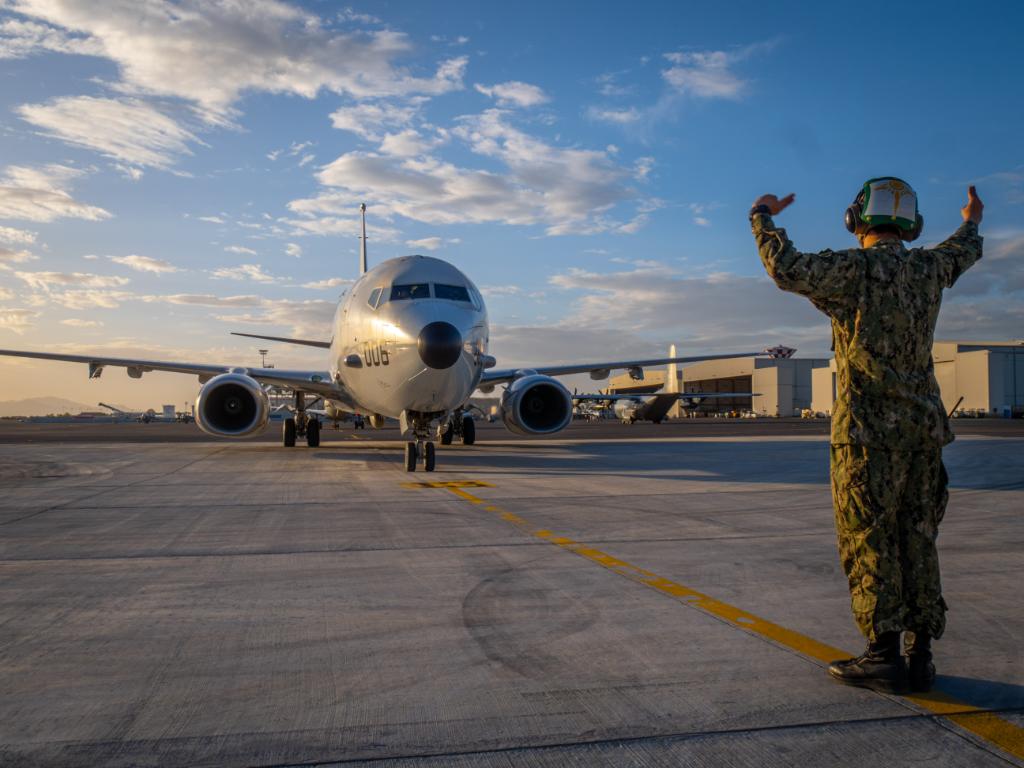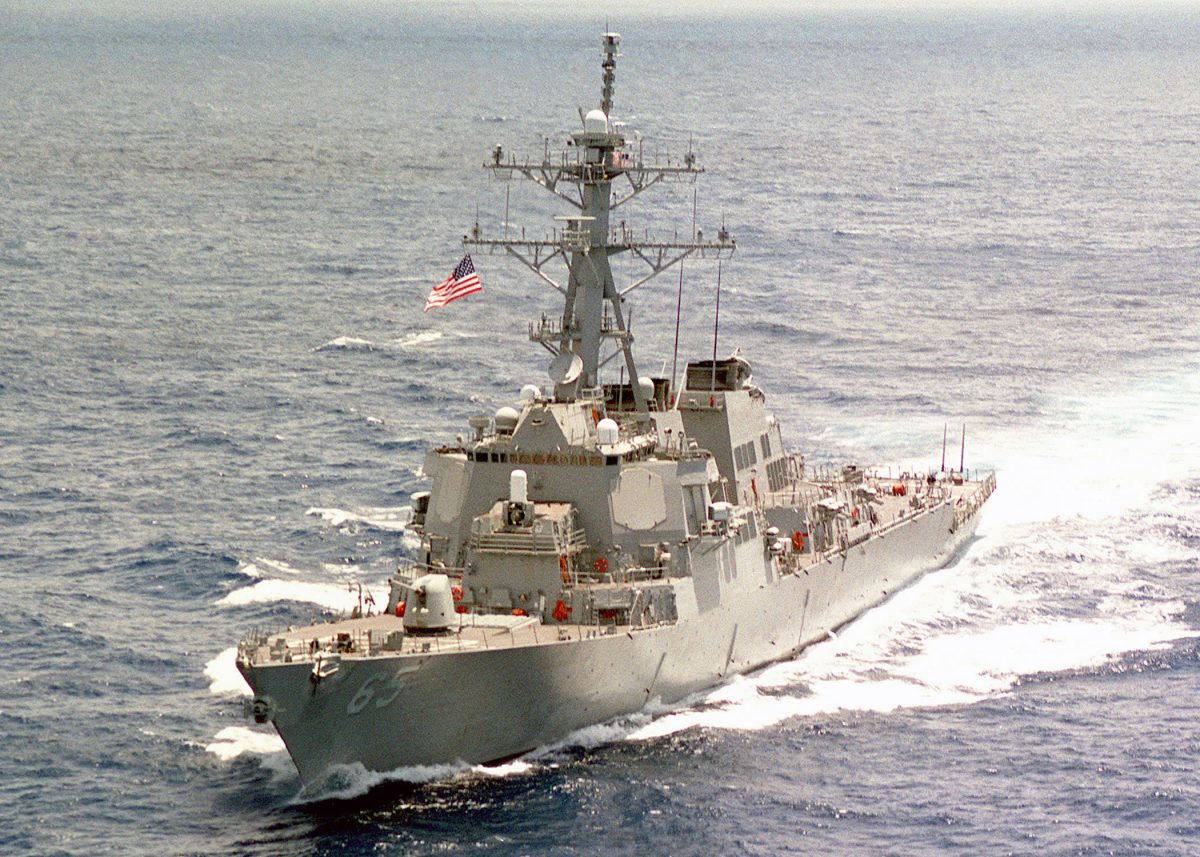Despite Chinese President Xi Jinping’s repeated promises, a top US military officer has claimed that China has fully militarized at least three of the several man-made islands it constructed in the highly-contested South China Sea.
Armed With Hypersonic Missiles, US Navy To Deploy Its Nuclear Submarines To Pacific To Thwart ‘Chinese Invasion Of Taiwan’
The islands of Mischief Reef, Subi Reef, and Fiery Cross have been armed with anti-ship and anti-air missile systems, laser and jamming equipment, and fighter jets, according to US Navy officials who surveyed outposts in the South China Sea’s Spratly archipelago – one of the world’s most disputed regions.
US Indo-Pacific commander Admiral John C. Aquilino shared the development with the Associated Press. Journalists from AP had joined Admiral Aquilino on board a P-8A Poseidon plane during the reconnaissance mission.
“I think over the past 20 years we have witnessed the largest military buildup since World War II by the [People’s Republic of China],” Aquilino said.
Chinese structures at the disputed South China Sea Mar. 20, 2022 as seen from a US recon plane. (AP Photos/Aaron Favila) Story here https://t.co/JDj5n9E8qw by @JimSGomez #spratlys #SouthChinaSea #china #military #westphilippinesea @APNews pic.twitter.com/nKPvCCbMV4
— Aaron Favila (@AaronFavila) March 21, 2022
“They have advanced all their capabilities and that build-up of weaponization is destabilizing to the region,” he added, noting that the move antagonizes the other nations near the South China Sea, which include the Philippines, Vietnam, Malaysia, Taiwan, and Brunei.
Chinese officials have not yet responded, but Beijing insists that its military posture is solely defensive, designed to safeguard its sovereignty, according to the Chinese government.
However, China now has the world’s second-largest defense budget and is rapidly modernizing its forces with weapon systems such as the J-20 stealth fighter, hypersonic missiles, and two aircraft carriers (with a third on the way). That’s why the US and its allies are concerned about Beijing’s aggressive military expansion in the region.
During the Navy’s mission, Chinese callers frequently warned the crew onboard the P-8A Poseidon plane that it had illegally crossed what they said was Chinese territory and demanded the plane to move away.

“China has sovereignty over the Spratly islands, as well as surrounding maritime areas. Stay away immediately to avoid misjudgment,” one of the stern radio messages said in a veiled threat.
The US Navy plane ignored multiple warnings and pressed on defiantly with its surveillance in a brief but tense moment witnessed by the two AP journalists invited onboard. “I am a sovereign immune United States naval aircraft conducting lawful military activities beyond the national airspace of any coastal state,” a US pilot radioed back to the Chinese.
“Exercising these rights is guaranteed by international law and I am operating with due regard to the rights and duties of all states,” he said. In a previous incident, a Chinese fighter flew near a US aircraft in a dangerous maneuver in the disputed region, according to Navy commanding officer Joel Martinez, who led the crew of the P-8A Poseidon.
“The US flight crew calmly reminded the Chinese to comply with aviation safety regulations,” he said.
As the P-8A Poseidon flew as low as 15,000 feet near the Chinese-occupied reefs, some appeared to be like small cities on-screen monitors, with multi-story buildings, warehouses, hangars, seaports, runways, and white spherical objects Admiral Aquilino suggested were radars. At least 40 unidentified vessels were reported anchored near Fiery Cross.
While the three islands have been militarized to the hilt, it is unknown whether China would continue to build military facilities in other areas. “The function of those islands is to expand the offensive capability of the PRC beyond their continental shores,” Aquilino said. “They can fly fighters, bombers plus all those offensive capabilities of missile systems.”
Any military or civilian jet passing over the disputed waterway could easily come within range of China’s missile system, he noted. “So that’s the threat that exists, that’s why it’s so concerning for the militarization of these islands,” he added. “They threaten all nations who operate in the vicinity and all the international sea and airspace.”
US’ Response
In 2014, China began building artificial islands in the South China Sea, constructing them on top of rocks or reefs that were near to the water’s surface at high tide. China built island outposts on coral atolls to bolster its sweeping territorial claims over virtually the entire South China Sea.

The United States answered by deploying warships through the region in what it calls “freedom of operation” missions.
Although the United States has no claims, it has committed Navy ships and planes to monitor and encourage free navigation in international waterways and airspace for decades. China usually opposes any military intervention by the United States in the region. The other countries in the region claim all or part of the sea, which conveys $5 trillion worth of commodities every year.
Despite China’s aggression, Admiral Aquilino believes that long-standing territorial disputes should only be settled amicably, citing the Philippine government’s successful move to bring its disputes with China to international arbitration in 2013 as a good example.

Under the United Nations Convention on the Law of the Sea, the UN-backed arbitration tribunal dismissed China’s broad historical claims in the South China Sea. Beijing has denounced the verdict as a ‘sham’, as previously reported by EurAsian Times.
The announcement of China’s activities in the disputed waters has fueled fears that the country will attack Taiwan. On Friday morning, China sailed an aircraft carrier across the Taiwan Strait, shadowed by a US destroyer, just hours before the two countries’ leaders were set to meet for the first time in months.
The Taiwan Strait in the South China Sea is a contentious waterway, with China claiming democratically governed Taiwan as its own. Beijing has increased military activities near the island in the last two years to bolster its sovereignty claims, unsettling Taipei and Washington.
- Contact the author at ashishmichel@gmail.com
- Follow EurAsian Times on Google News




